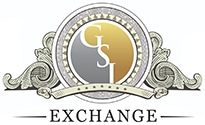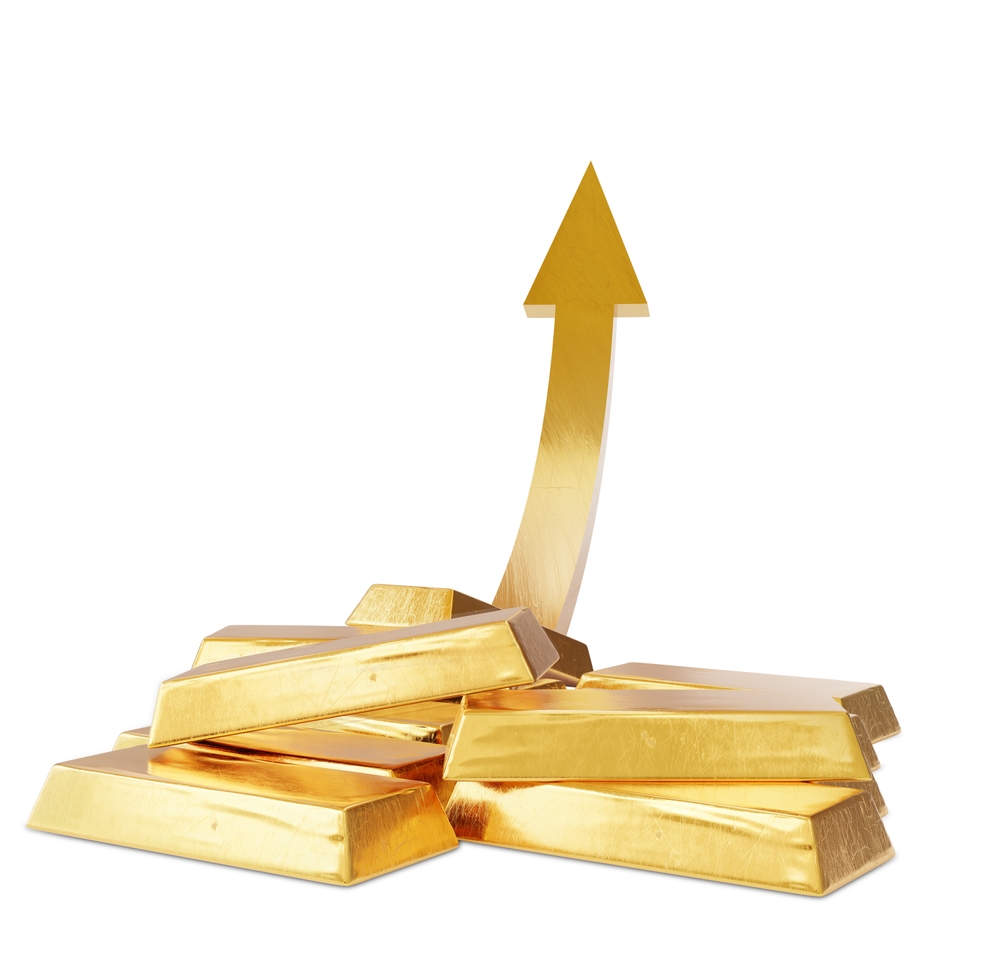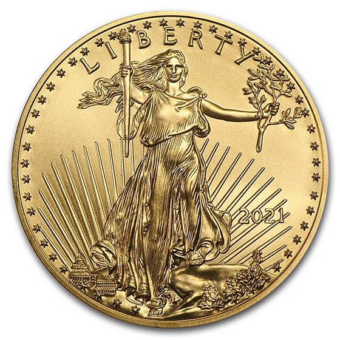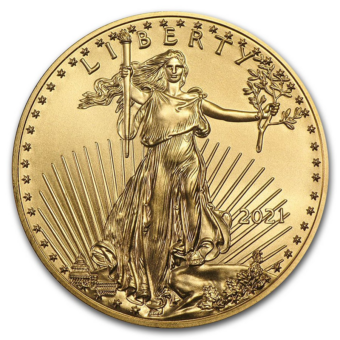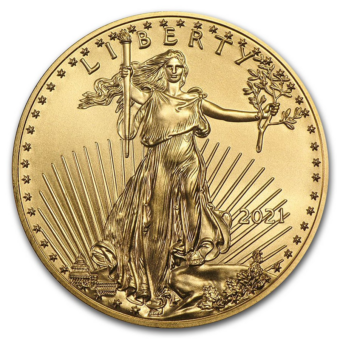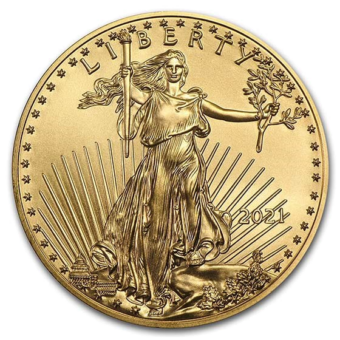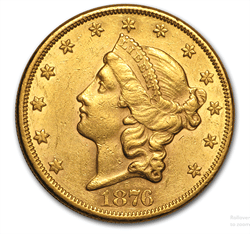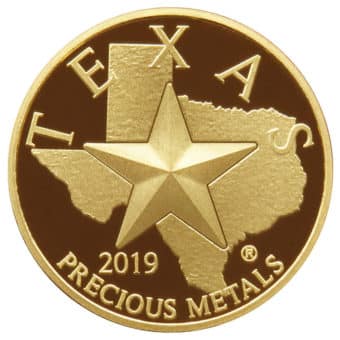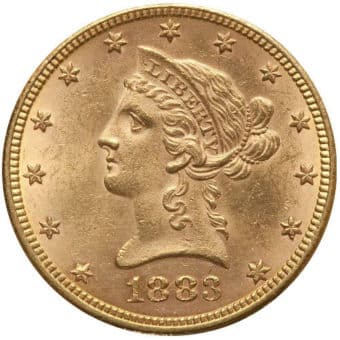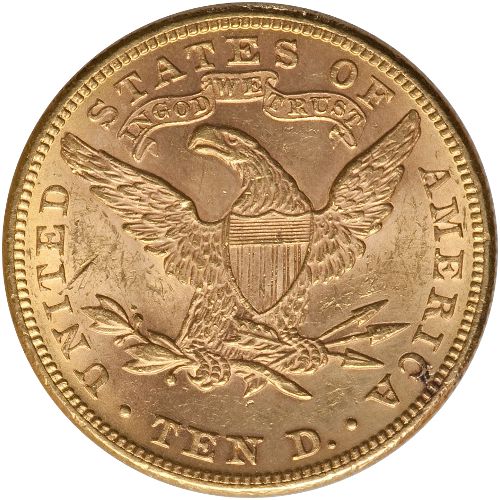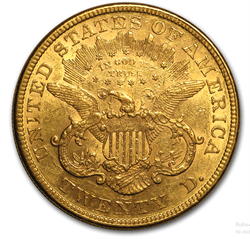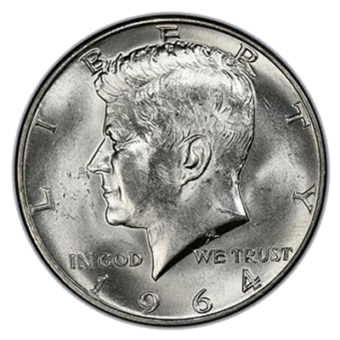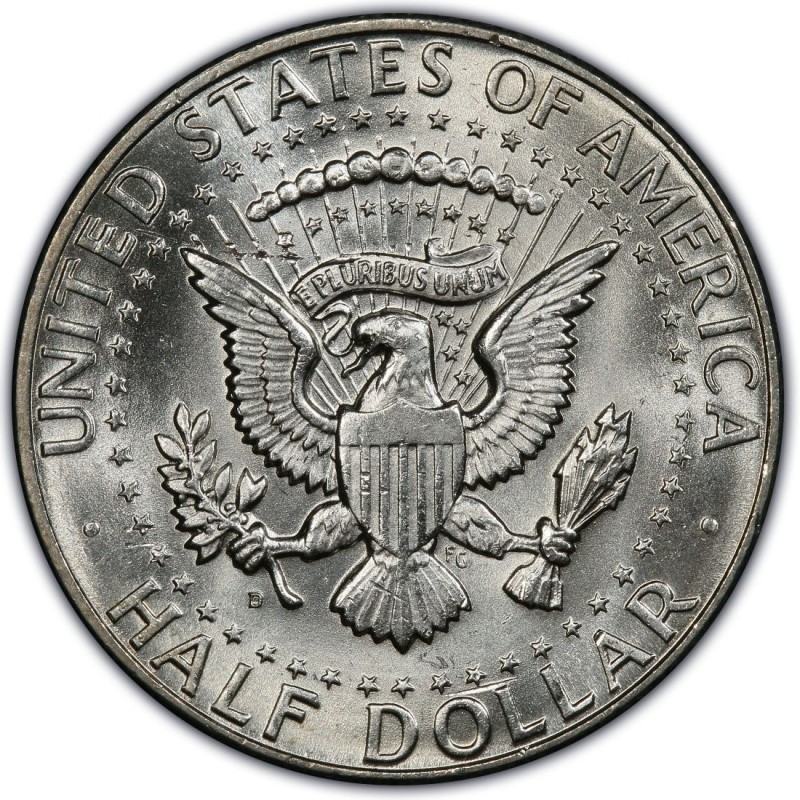A Daily Journey Through the Week's Market
Monday - 3.10.25: Gold and silver edged lower as mild profit-taking weighed on prices, but a struggling U.S. stock market helped limit losses. April gold dipped $2.20 to $2,911.90, while May silver fell $0.179 to $32.63. Recession fears deepened as U.S. stocks tumbled and President Trump acknowledged a “period of transition” amid escalating trade tariffs.
Tuesday - 3.11.25: Gold and silver prices surged as safe-haven demand returned amid rising U.S. recession fears and a sharp stock market sell-off. A weaker U.S. dollar, hitting a four-month low, further supported the metals. April gold climbed $23.30 to $2,922.90, while May silver gained $0.70 to $33.23. U.S. stocks hit multi-month lows after new tariffs on Canada fueled market jitters.
Wednesday - 3.12.25: Gold and silver prices climbed to multi-week highs as cooler-than-expected U.S. inflation data fueled safe-haven demand amid global trade tensions. April gold rose $20.40 to $2,941.30, while May silver gained $0.538 to $33.68. February CPI came in at 2.8% year-on-year, slightly below forecasts, causing the U.S. dollar to give up most of its overnight gains.
Thursday - 3.13.25: Gold surged to record highs Thursday, with April futures up $43.60 at $2,990.30, driven by safe-haven demand amid global trade tensions and softer U.S. inflation data. Silver also rallied, hitting a 4.5-month high at $34.30. The February Producer Price Index was flat month-on-month, below expectations of 0.3%, while core PPI declined 0.1%, reinforcing Wednesday’s cooler-than-expected CPI report.
Friday - 3.14.25: Gold hit a record high of $3,017.10 (April Comex futures) in early U.S. trading Friday, driven by safe-haven demand amid global trade war fears, expectations of a more dovish Fed after tame inflation data, and strong technicals. Silver followed, reaching a 4.5-month high. April gold last traded at $3,008.60, up $17.30, while May silver rose $0.424 to $34.73.
Gold Futures Shatter $3,000 Milestone Amid Rate Cut Speculation
Gold futures have surged past $3,000 per ounce for the first time, marking a historic milestone in the precious metals market.
What’s happening:
- Record-breaking rally: April gold futures hit $3,001.30, gaining $57.90 (1.97%) on the day, after starting the year below $2,700.
- Inflation cools: The February Producer Price Index (PPI) rose 3.2% year-over-year, down from 3.7% in January and below expectations of 3.3%. Core PPI fell 0.1%, missing forecasts of a 0.3% increase.
- Fed policy in focus: Traders are positioning for potential rate cuts, but with the Federal Open Market Committee (FOMC) meeting on March 18-19, the Fed is expected to hold rates steady for now.
The big picture:
Gold’s rapid ascent underscores its role as a hedge against economic uncertainty and shifting monetary policy expectations. After breaking a long-term trendline in early 2023, gold's rally has accelerated, making it the most valuable inflation-adjusted price in history. With the Fed’s next move in focus, gold’s trajectory remains firmly in the spotlight.
Gold Eyes $3,000 as Rally Continues Despite Cooling U.S. Producer Prices
Gold prices remain near record highs, unfazed by softer U.S. producer inflation data, as investors seek refuge amid economic uncertainty.
What’s happening:
- PPI unchanged: The Producer Price Index (PPI) showed no increase in February, following January’s 0.4% rise, below economists’ expectations of 0.3%.
- Core PPI dips: Excluding food and energy, core PPI fell 0.1%, missing forecasts for a 0.3% increase. Year-over-year, core PPI stands at 3.4%, slightly under the 3.5% consensus.
- Gold holds strong: Spot gold traded at $2,944.80, up 0.37% on the day, hovering near last month’s all-time highs above $2,950.
- Fed policy implications: Softer inflation data supports the case for Federal Reserve rate cuts, which could further fuel gold’s rally.
The big picture:
Gold remains resilient despite easing inflation pressures, as investors brace for potential economic turbulence. While weaker PPI alleviates some stagflation fears, analysts warn of inflationary risks tied to global trade tensions. If the Fed proceeds with rate cuts, gold could breach the $3,000 mark, but persistent price pressures may complicate the central bank’s policy path.
Gold Eyes $3,000 as Inflation Eases, Fed Rate Cuts in Focus
Gold prices are holding above $2,900 as softer-than-expected inflation data fuels speculation about potential Federal Reserve rate cuts. However, bullish momentum remains weak.
What’s happening:
- Inflation cools: February CPI rose 0.2%, down from January’s 0.5% increase, with annual inflation easing to 2.8% from 3.0%.
- Core CPI remains elevated: Stripping out food and energy, core inflation climbed 0.4% for the month and 3.1% year-over-year, slightly above forecasts.
- Gold holds steady: Spot gold last traded at $2,917.70, showing little reaction to the data.
- Fed policy in focus: While inflation is slowing, the Federal Reserve remains cautious, keeping rate cuts on hold as the labor market stays strong.
The big picture:
Muted inflation data could pave the way for eventual Fed rate cuts, which would support gold by lowering real yields. However, persistent price pressures, particularly in shelter and services, may keep the central bank from easing policy too soon. Gold’s path to $3,000 depends on how economic risks evolve in the coming months.
Gold Climbs on Tariff Uncertainty and Cooler Inflation
Gold prices gained as safe-haven demand rose amid renewed trade tensions and slowing inflation. April gold futures settled at $2,943.40, up $20.60 (0.70%), marking the second major advance this week.
What’s happening:
- Inflation moderates: February’s Consumer Price Index (CPI) rose 0.2%, easing from January’s sharp 0.5% increase. The core measure (excluding food and energy) also increased 0.2%.
- Dollar rebounds slightly: The U.S. dollar index rose 0.16%, snapping a seven-day losing streak, though analysts expect renewed weakness.
- Trump claims victory: Press Secretary Karoline Leavitt stated that inflation is “moving in the right direction” under Trump, emphasizing efforts to lower costs.
- Fed policy watch: Despite softer inflation, analysts say the Federal Reserve is unlikely to cut rates in March, limiting gold’s upside.
The big picture:
President Trump’s 25% steel and aluminum tariffs took effect today, triggering swift retaliation from Canada and the EU. With more tariffs expected on April 2nd, concerns of an escalating trade war are growing. The uncertainty has reinforced gold’s appeal as a hedge, particularly as the dollar’s purchasing power faces further pressure.
Silver Shines as a Hedge Against Market Chaos
With stocks at extreme valuations, the market pullback is fueling demand for gold and silver. While tariffs may have triggered yesterday’s crash, the real issue is the bubble itself—overpriced stocks set up for disappointment. If this is the start of a bear market, precious metals offer a safe haven.
What’s happening:
- Market turmoil fuels demand: Investors are shifting into gold and silver as stock valuations reach unsustainable levels.
- Historical precedent: During the 2000-2008 downturn, the XAU gold miner index soared 393% while the Nasdaq fell 27%.
- Silver leads the charge: Silver rose 2% today, while the largest silver miner ETF (SIL) gained 3.5%, and junior miners (SILJ) jumped 4.9%.
- Breakout potential: If silver clears $35/oz, a surge toward $50+ is likely.
The big picture:
As stocks falter, investors are eyeing precious metals for protection and growth. The Federal Reserve’s likely response—more liquidity—could further boost silver’s appeal. If the shift from tech to metals gains traction, silver miners stand to benefit most.
U.S. Dollar Faces Worst Year Since 2008 Amid Tariff Fallout
The U.S. dollar is experiencing its steepest decline in 17 years, down 4.2% since January. The latest drop follows the implementation of tariffs on Canadian and Mexican goods, intensifying concerns over inflation and market volatility.
What’s happening:
- Dollar tumbles: The U.S. Dollar Index has fallen 4.2% since January, the largest drop since 2008.
- Tariffs trigger volatility: Trade policies enacted last week have accelerated the dollar’s decline, benefiting the euro, which gained 4.5% in just one week.
- Interest rate uncertainty: Recession fears and shifting Fed rate cut expectations are weighing on the dollar. Investors now anticipate three rate cuts by December, up from just one in February.
- Inflation risk: A weaker dollar raises import costs, compounding the effects of tariffs and potentially pushing up consumer prices.
The big picture:
While a declining dollar makes U.S. exports more competitive, it also raises the cost of imported goods, potentially worsening inflation. Market uncertainty remains high as investors watch for Fed policy shifts and further trade tensions. If the dollar continues its downward trend, American consumers could see higher prices in the months ahead.
Next Week’s Key Events
Economic Calendar: March 17 - March 21
Monday, March 17
-
8:30 AM ET – U.S. Retail Sales (Feb.)
-
8:30 AM ET – Empire State Manufacturing Survey (March)
Tuesday, March 18
-
8:30 AM ET – Housing Starts and Building Permits (Feb.)
-
9:15 AM ET – Industrial Production and Capacity Utilization (Feb.)
Wednesday, March 19
-
2:00 PM ET – FOMC Interest-Rate Decision
Thursday, March 20
-
8:30 AM ET – Initial Jobless Claims (March 15)
-
8:30 AM ET – Philadelphia Fed Manufacturing Survey (March)
-
10:00 AM ET – Existing Home Sales (Feb.)
-
10:00 AM ET – U.S. Leading Economic Indicators (Feb.)
Friday, March 21
-
No scheduled reports
IMPACT ON PRECIOUS METALS MARKETS
- U.S. Retail Sales (March 17, 8:30 AM ET)
- Weak retail sales could signal a slowing economy, increasing demand for gold and silver as safe-haven assets.
- Strong sales may boost economic optimism, leading to a stronger dollar and reducing gold and silver demand.
- Empire State Manufacturing Survey (March 17, 8:30 AM ET)
- A strong reading suggests economic expansion, which could pressure gold and silver prices downward.
- A weaker number may lead to recessionary concerns, boosting precious metals.
- Housing Starts and Building Permits (March 18, 8:30 AM ET)
- Higher-than-expected housing data suggests economic strength, potentially weakening gold and silver.
- Weaker housing data could increase recession fears, making precious metals more attractive.
- Industrial Production and Capacity Utilization (March 18, 9:15 AM ET)
- Rising industrial production indicates economic strength, which can reduce demand for gold and silver as safe havens.
- Lower-than-expected production may push investors toward gold and silver for stability.
- FOMC Interest-Rate Decision (March 19, 2:00 PM ET)
- A rate hike strengthens the dollar and raises bond yields, making non-yielding gold and silver less attractive.
- A rate pause or cut weakens the dollar, making gold and silver more attractive as inflation hedges.
- Fed Chair Powell Press Conference (March 19, 2:30 PM ET)
- Hawkish tone (focus on inflation and rate hikes) could drive gold and silver prices down.
- Dovish tone (focus on economic risks and potential rate cuts) may boost precious metals.
- Initial Jobless Claims (March 20, 8:30 AM ET)
- Higher-than-expected claims suggest labor market weakness, increasing safe-haven demand for gold and silver.
- Lower claims indicate a strong labor market, which can push gold and silver prices lower.
- Philadelphia Fed Manufacturing Survey (March 20, 8:30 AM ET)
- A strong reading signals economic resilience, which can reduce gold and silver demand.
- A weak reading could raise recession concerns, benefiting precious metals.
- Existing Home Sales (March 20, 10:00 AM ET)
- A strong housing market indicates consumer confidence and economic strength, potentially weakening gold and silver.
- A decline in home sales may increase concerns about the economy, pushing investors toward precious metals.
- U.S. Leading Economic Indicators (March 20, 10:00 AM ET)
- A rising LEI suggests economic growth, reducing demand for gold and silver.
- A declining LEI signals economic weakness, increasing safe-haven demand.
